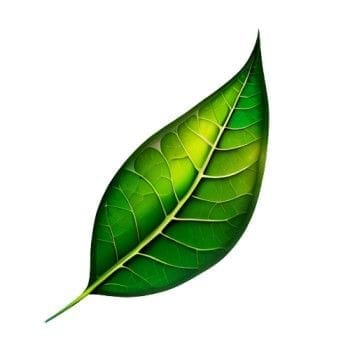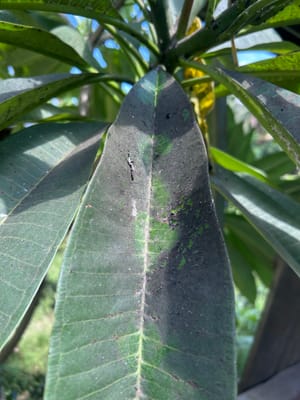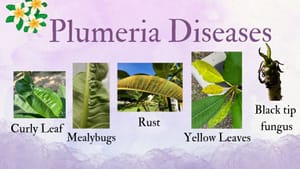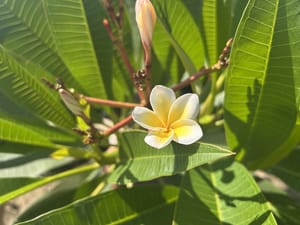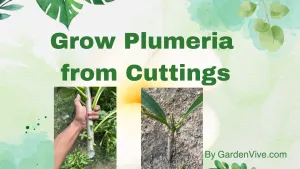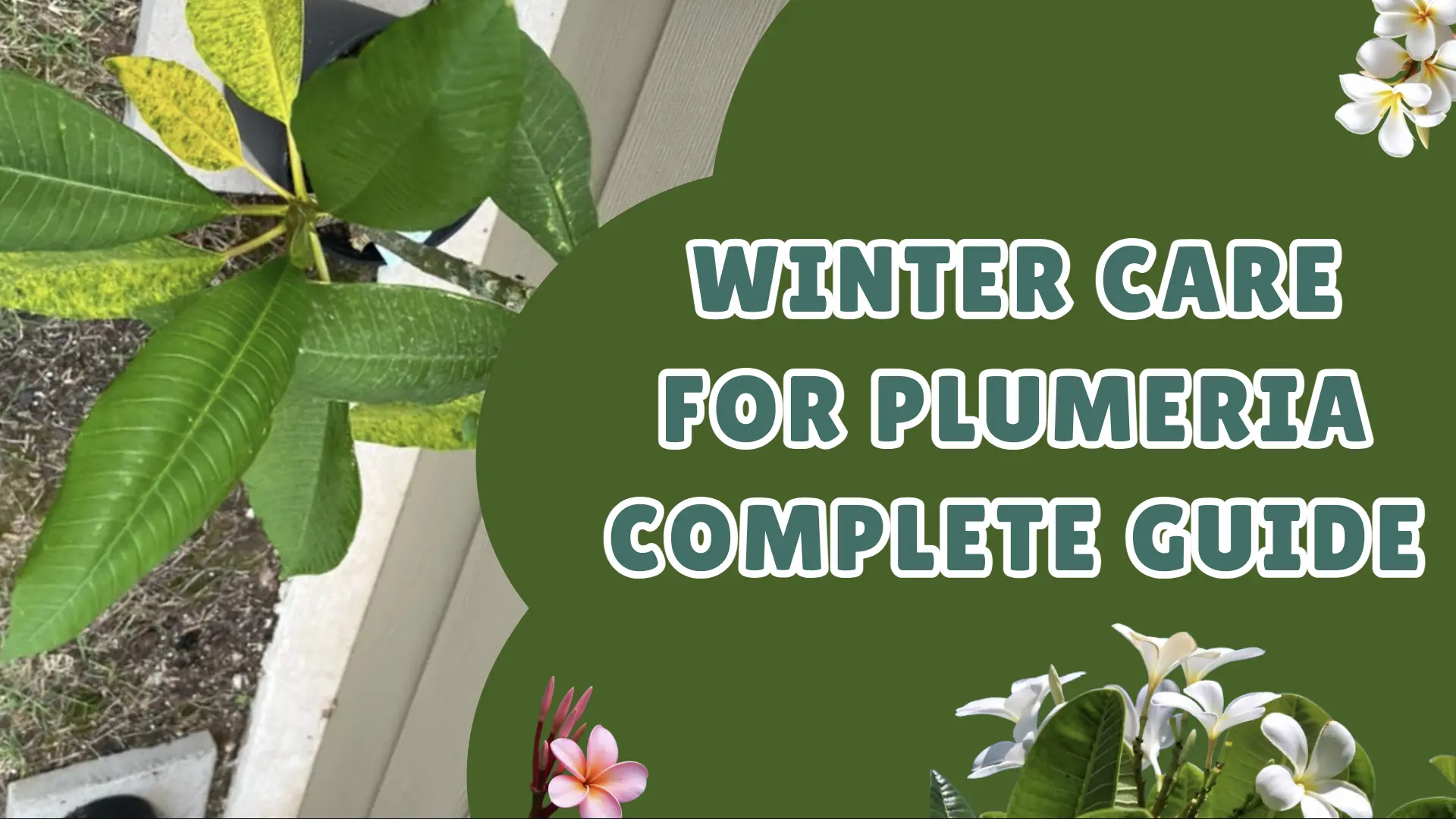
Plumeria (Also known as Frangipani) performs well in warmer climates and goes dormant in wintertime. This is why it's important to take proper care of Plumeria in Winter. In this article, I will guide you on how to take care of Plumeria in Winter.
Before we start the guide, I feel it is important to tell you that I am a bit serious about Plumeria. Thus, I will provide you with the extreme winter caring guidelines for your Plumeria plant. A few of the instructions are necessary and a few are optional (to make you a winner as a Plumeria grower).
I've dealt with numerous problems with my Plumerias, from leaf curling and yellowing to rust and mealybugs, and managed to cure them all. Most of the issues are due to not maintaining the proper watering guide for Plumeria and lack of care in winter time.
Understand the Dormancy Period of Plumeria
If you're unable to tell whether your Plumeria is in dormancy, it becomes difficult to provide the necessary care at the right time. This is why it's essential to know the dormancy period of your Plumeria. If the temperature falls below 53.6°F (12°C) your Plumeria will start to enter its dormancy phase. This is the time when you need to be more serious about overwintering Plumeria.
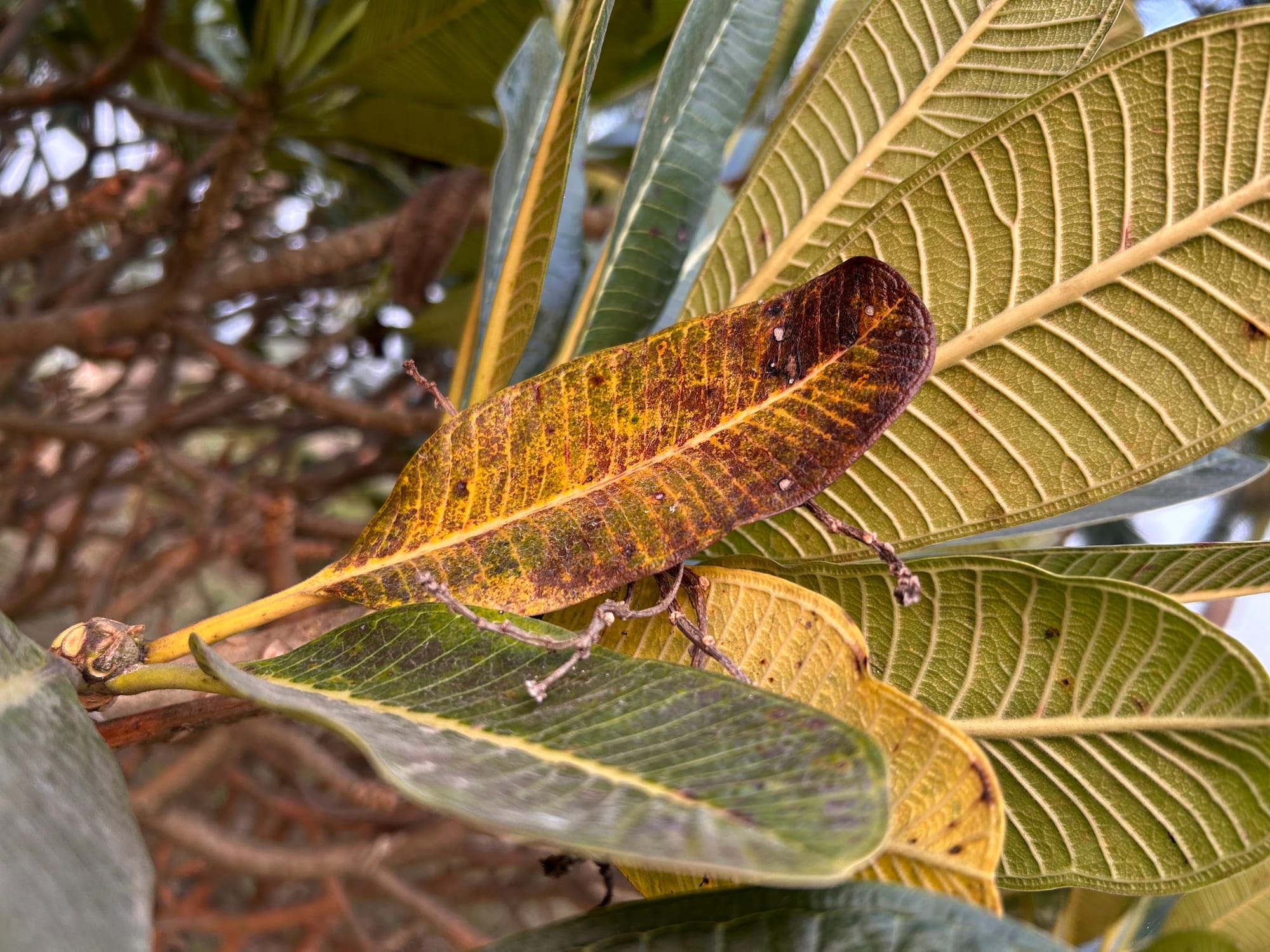
You will start seeing the lower leaves turning brown/yellow and falling off like this.
Dormany is not bad at all. Plumeria protects itself from cold damage by going dormant.
Those who are growing Plumeria below Zone 8 are more likely to witness the dormancy phase clearly.
Above Zone 7, from mid-October, you can expect to see a few symptoms that will indicate that your plumeria is going towards dormancy.
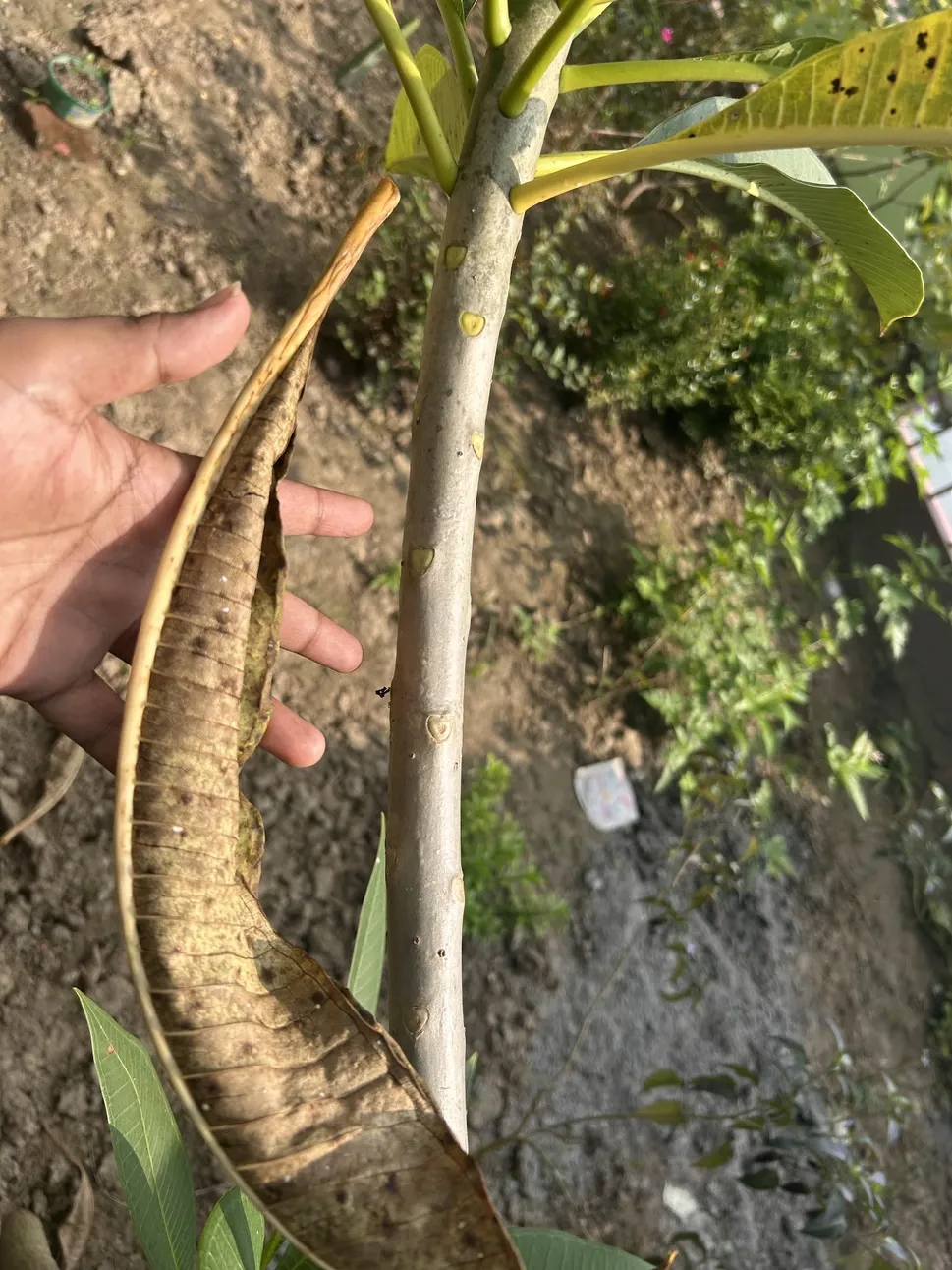
You can see the leaves are getting yellowish and then at a time falling off from the stem. In the above picture, a few leaves have already fallen. I am growing this in Zone 10 (South Florida). My Grandpa (85) is in North Texas and there the symptoms start earlier.
If you are growing Plumeria from cuttings, a must-read for you: Grow Plumeria from Cuttings - complete guide
Plumeria Dormancy Time USDA Zone-Wise
| USDA Zone | Approx Dormancy Start Time | Climate Description |
|---|---|---|
| Zones 9 and below | Late October - November | Colder climates with early frosts. Plumeria enters dormancy early to avoid cold damage. |
| Zone 10 | November - December | Mild winters but still cold enough to trigger dormancy as temperatures dip below 50°F. |
| Zone 11 | December - January | Subtropical climates with occasional cool nights. Dormancy may be short or partial. |
| Zone 12 and above | No dormancy or Late January | Tropical climates. Plumeria may remain semi-active throughout winter or enter a very brief dormancy. |
What to do in winter to protect Plumeria from frost
Let's start with potted plants. If your Plumeria is potted, consider bringing it inside when you witness the first dormancy symptoms. Those who have a garage, keep them in the garage for the whole winter. Do that only if your plant can get bright indirect light in the garage. 😅
No need to place it in a warm place inside. You can place it in a cool room. Just make sure it gets enough bright light (indirect) in the daytime.
Tip: I know it's pretty cold out there in Winter, you can sit near fireplaces, but your Plumeria can't. They don't like heat at this time, as it can lead to root dehydration.
If your Plumeria is outside in winter and there is a chance of frost consider covering the plant with frost cloth. (Check the weather on a regular basis on these hard cold days)
Note: Use a breathable frost cloth or burlap.
Keep the soil warm:
In the extreme cold in winter, you can add a thick layer of mulch around the base of the Plumeria plant. Mulch will act like an insulator and will keep the soil warm during extreme cold days.
You may wonder: "Why did I just tell you heat can lead to root rot?" Heat and warmth are not the same. Warm soil will not turn the soil dry but heat from hire can do that.
Do not feed your plumeria in winter. It is not required as it has no growing activity in winter. (Only for colder regions. If you see leaves standing in winter in warmer regions, feed organic compost only)
Those who live in warmer places ( zone 10 or 11 ) can consider using compost or slow-releasing any fertilizer.
Watering Plumeria During Winter
If your plumeria is potted, you may have to water it only once or twice in a month. (To prevent the soil from drying out completely) Check if the holes in your pot are working fine or not. If you do not change the soil of your pot for a long time, the holes may not be functioning as expected. Your main object is to water only if the soil is completely dry. I do not water dry soil for 2-3 days in winter (in between two adjacent watering). Sometimes I miss watering in this way intentionally.
For Plumeria planted in the ground, watering is easier. The soil does not dry out easily as compared to pot. So you can consider watering only once in a month. But it depends on a lot of other factors like sunlight the soil is getting and all. So it's best to use your finger to check if the soil is dry or not. (Only the top 1-inch layer) If it is dry water it once and forget to water it until you witness the dry soil again.
If you want a complete watering guide check: When to Water Plumeria - Complete Watering Guide
Pruning during dormancy
Do not prune in the dormant phase. I never recommend that. If it becomes too urgent for some reason to prune, do light pruning and avoid hard pruning.
It is best to prune just before the winter. When your plumeria goes into dormant, it saves energy for the next growing season. So please do not put extra stress on your Plumeria by pruning. Recovering from pruning stress needs lots of energy.
You can remove the dead leaves or yellow leaves that are about to fall. (It will not cause stress to your plant)
How to care for the Plumeria seedlings in Winter?
First of all, I do not suggest someone to sow seeds just before the winter. The reason is pretty simple: Plumeria seedlings are more vulnerable to cold temperatures and need extra attention during the winter months as compared to mature plumeria plants.
Sow the seeds in late spring or early summer so that the seedlings become strong and established to handle the cold in the winter time.
But wait wait, what can you do if you have already newly grown seedlings with you? Don't worry I will not disappoint you. Here is the guide:
Keep the seedlings indoors for the whole winter season. They are more likely to be affected by cold damage. Choose a warm place near a window where it can get bright light from outside and keep it there. (avoid drafts or cold windowsills)
If your window side is not warm, you can use glow light. We know that the winter days are shorter, so consider providing light for an extra hour in the evening. (This is the extreme care I am talking about. Generally, the nursery owners do this trick)
Pests and diseases
If you are from a colder region, you can happily skip this part as there is almost zero chance of pests and diseases but for warmer regions gardeners are not that happy.
Plumeria can face spider mites, mealy bugs, and yellow leaf issues (not talking about the natural dormant yellowing. Fresh new leaves can turn yellow in warmer regions where dormancy is not visible that much) in warmer regions.
Plumeria leaf stem turning red
If you ever notice the stems of your plumeria leaves changing color (mostly toward red), indicates that there is a lack of nitrogen in the soil. But there are a few other reasons like sudden temperature change (before the plant can even realize that). But it happens mostly for the lack of nitrogen. Give a good fertilizer and water well, it will be fine in a few days.
As I am a super fan of Plumeria, I have covered how to cure all the major diseases of Plumeria you can check from the below links:
- White Spots on Plumeria Leaves - Causes and Solution
- Plumeria is not blooming - What to do?
- Brown spots on Plumeria leaves
- Get rid of Plumeria Rust - Prevention
- Mealybugs on Plumeria - Protection Tips
- Plumeria Leaves Yellowing - Causes and Solution
- Plumeria Leaves Curling - Causes and how to fix
Dormancy will end as temperatures begin to rise just before spring arrives. Do not take out your potted plumerias directly. At first, keep those on the porch or in a shaded area. Then when they get used to the outside climate, you can keep them outside. (2-3 days later)
Do you have any specific questions related to Plumeria? Feel free to contact us or do let me know in the comment section.
